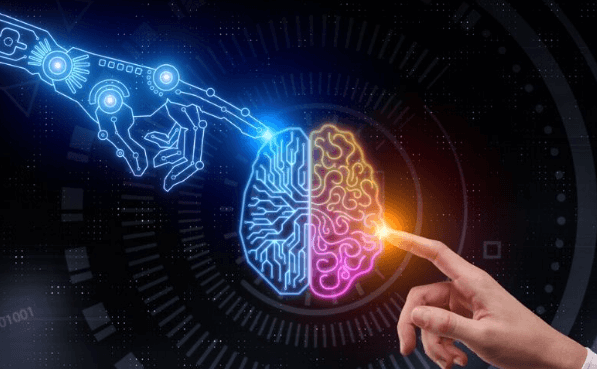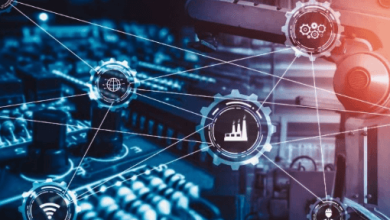Intelligent Automation and AI Integration: Transforming the Future of Business Operations

Introduction
In today’s rapidly evolving digital landscape, intelligent automation and AI integration have emerged as critical drivers of business innovation. By combining the power of automation with advanced artificial intelligence (AI), organizations can achieve unprecedented levels of efficiency, accuracy, and decision-making capability. This article explores the various facets of intelligent automation, its impact on different industries, and the future trends that will shape its continued evolution.
Understanding Intelligent Automation
Intelligent automation refers to the integration of AI technologies with traditional automation processes to create systems that can perform complex tasks with minimal human intervention. Unlike traditional automation, which relies on predefined rules and scripts, intelligent automation leverages AI to adapt, learn, and make decisions based on real-time data. Core components of intelligent automation include:
- AI Algorithms: The engines that drive decision-making and learning.
- Automation Tools: Software that automates tasks and workflows.
- Data Analytics: Tools that analyze data to inform decisions and optimize processes.
The Role of AI in Intelligent Automation
Artificial intelligence is the cornerstone of intelligent automation, enabling systems to process and analyze vast amounts of data, recognize patterns, and make decisions with little or no human input. AI technologies that are integral to intelligent automation include:
- Machine Learning (ML): Allows systems to learn from data and improve over time.
- Natural Language Processing (NLP): Enables machines to understand and respond to human language.
- Computer Vision: Empowers machines to interpret and act on visual information.
These technologies enhance automation by making it more adaptive, flexible, and capable of handling complex tasks that go beyond simple, rule-based processes.
See also: Robotic Process Automation (RPA) in Business Processes: Revolutionizing Efficiency and Innovation
Key Technologies in AI Integration
The integration of AI into automation involves several key technologies:
- Machine Learning: Provides the ability to learn from data, enabling predictive analytics and pattern recognition.
- Deep Learning: A subset of ML that uses neural networks to model complex patterns in large datasets.
- Natural Language Processing (NLP): Facilitates communication between humans and machines, making it possible for systems to understand and generate human language.
- Computer Vision: Allows systems to interpret visual data, such as images and videos, to make informed decisions.
These technologies collectively enable the creation of intelligent systems capable of automating tasks that were previously thought to require human intelligence.
Evolution of Automation to Intelligent Automation
The journey from traditional automation to intelligent automation has been marked by significant technological advancements. Early automation efforts focused on automating repetitive, rule-based tasks through scripts and macros. With the advent of AI, these systems have evolved to handle more complex processes, adapt to changing conditions, and make decisions in real time. This evolution has transformed automation from a simple productivity tool to a strategic enabler of business innovation.
Benefits of Integrating AI with Automation
Integrating AI with automation offers numerous benefits:
- Enhanced Decision-Making: AI enables systems to make more informed decisions by analyzing large volumes of data in real time.
- Predictive Analytics: Machine learning algorithms can predict outcomes and trends, allowing businesses to anticipate and respond to changes proactively.
- Increased Efficiency: Automation of complex tasks reduces the need for manual intervention, speeding up processes and reducing errors.
- Scalability: Intelligent automation systems can be scaled to handle increasing workloads without a corresponding increase in resources.
- Personalization: AI-driven systems can deliver personalized experiences to customers by analyzing their preferences and behaviors.
These benefits make intelligent automation a powerful tool for driving business growth and innovation.
How Intelligent Automation Transforms Industries
Intelligent automation is having a transformative impact across various industries:
- Finance: Automating fraud detection, risk assessment, and financial reporting.
- Healthcare: Enhancing patient care through automated diagnostics, personalized treatment plans, and administrative efficiency.
- Manufacturing: Streamlining production processes, predictive maintenance, and supply chain optimization.
- Retail: Improving customer service through personalized recommendations, automated inventory management, and dynamic pricing strategies.
By enabling more efficient and effective operations, intelligent automation is helping businesses in these industries stay competitive and responsive to market demands.
Common Use Cases of Intelligent Automation
Some common use cases of intelligent automation include:
- Customer Service: AI-powered chatbots and virtual assistants handle customer inquiries, freeing up human agents for more complex tasks.
- Supply Chain Management: Predictive analytics optimize inventory levels, reduce waste, and ensure timely delivery of goods.
- Human Resources: Automating recruitment processes, employee onboarding, and performance evaluations.
- Marketing: AI-driven tools analyze customer data to deliver personalized marketing campaigns and optimize ad spend.
These use cases demonstrate the versatility and value of intelligent automation across different business functions.
Implementing Intelligent Automation in Business
To successfully implement intelligent automation, businesses should follow these steps:
- Identify Automation Opportunities: Determine which processes can benefit most from AI integration.
- Develop a Strategy: Outline goals, scope, and timelines for the integration of AI into existing automation systems.
- Choose the Right Tools: Select AI and automation tools that align with business needs and capabilities.
- Pilot the Initiative: Test the intelligent automation solution on a small scale to refine and optimize it before full deployment.
- Scale Up: Gradually expand the use of intelligent automation across the organization.
- Monitor and Optimize: Continuously track performance metrics and make adjustments to ensure ongoing improvement.
Challenges in AI and Automation Integration
While the benefits of intelligent automation are significant, businesses may encounter challenges:
- Technical Complexity: Integrating AI with existing systems can be technically challenging and require specialized skills.
- Data Quality: AI systems rely on high-quality data to function effectively; poor data can lead to inaccurate outcomes.
- Ethical Considerations: The use of AI raises ethical issues, such as bias in decision-making and transparency.
- Workforce Impact: Intelligent automation can disrupt traditional job roles, necessitating reskilling and workforce transformation.
Addressing these challenges requires careful planning, robust governance, and a commitment to ethical practices.
AI-Powered RPA (Robotic Process Automation)
AI-powered RPA represents the next evolution of automation, where AI enhances the capabilities of traditional RPA systems. Examples of intelligent RPA include:
- Cognitive RPA: Bots that can process unstructured data, such as emails and social media content, using NLP.
- Predictive RPA: Bots that predict outcomes based on historical data and adjust their actions accordingly.
- Adaptive RPA: Bots that learn from their interactions and adapt to changing processes and environments.
These advancements enable businesses to automate more complex and dynamic processes




